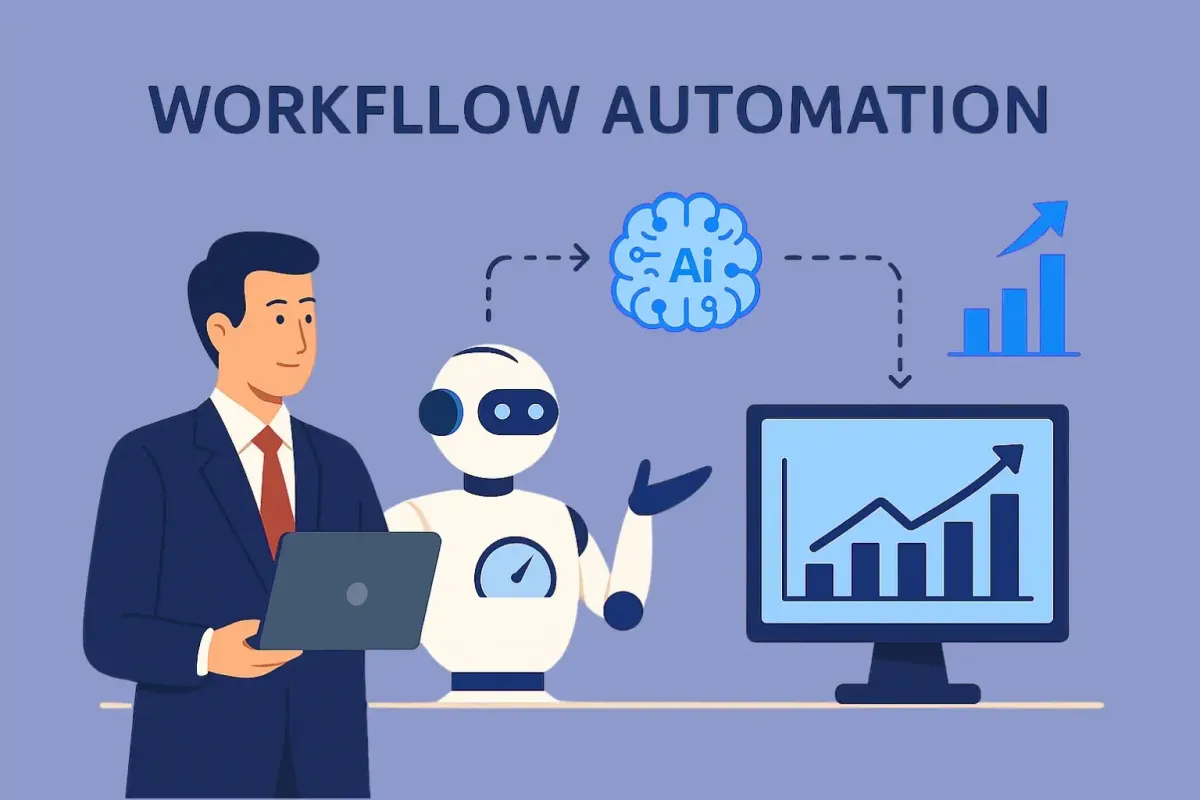
Workflow Automation: Streamline Your Business Processes for Maximum Efficiency
In today's fast-paced business environment, workflow automation has emerged as a pivotal strategy for organizations aiming to enhance efficiency and stay ahead of the competition. Companies across industries are discovering that automating business processes helps them adapt more quickly, operate more efficiently, and respond to customer demands with unprecedented agility. With approximately 66% of businesses having automated at least one process in 2024, this trend shows no signs of slowing down.
The rapid evolution of modern marketplaces demands that businesses maintain operational flexibility and responsiveness. Organizations that fail to embrace automation risk falling behind competitors who leverage technology to streamline their operations and maintain competitive advantages. The numbers speak volumes: companies implementing automation report cost reductions between 10% and 50%, with some seeing ROI improvements of 30% to 200% within the first year.
This shift toward automated systems isn't just about keeping up with trends—it's about surviving and thriving in an increasingly demanding business landscape. Workflow automation represents more than just a technological upgrade; it's a fundamental transformation in how businesses approach their daily operations. By implementing automated processes, companies can redirect their human resources toward high-value activities while ensuring consistent, error-free execution of routine tasks.
What is Workflow Automation?
Workflow automation refers to the use of technology to automate a series of tasks, processes, or decision points that were previously handled manually. This approach involves creating systems that follow predefined rules and logic, allowing for seamless progression of tasks with minimal human intervention. These automated systems can handle everything from simple data entry to complex multi-step processes that span across different departments and applications.
Automated workflows follow predetermined criteria and can execute tasks without constant human supervision. They represent a fundamental shift from reactive to proactive business management, where systems anticipate needs, trigger appropriate responses, and maintain momentum even during off-hours or when key personnel are unavailable.
The distinction between manual workflows and automated workflows is fundamental to understanding the value proposition of automation technology. Manual workflows rely heavily on human inputs at every step, making them inherently time-consuming and prone to errors. Employees must manually trigger each action, review documents, make decisions, and pass tasks along to the next person in the chain. This approach often leads to bottlenecks, inconsistencies, and delays that can significantly impact business performance.
Automated workflows, on the other hand, operate according to predetermined criteria and can execute tasks without constant human supervision. These systems reduce manual effort and ensure tasks are completed consistently, creating a more reliable and efficient operational environment. Perhaps most importantly, automated workflows enable scalability without requiring a proportional increase in staff, allowing businesses to grow their operations without dramatically expanding their workforce.
Benefits of Workflow Automation
Increased Efficiency Through Automation
One of the most significant advantages of implementing workflow automation is the dramatic improvement in operational efficiency. Automation accelerates the completion of routine, repetitive tasks, allowing employees to focus on more strategic and high-impact activities.
Conclusion
Embracing workflow automation is not merely a technological decision but a strategic imperative for businesses aiming to thrive in today's competitive landscape. By leveraging automation, organizations can achieve unparalleled efficiency, reduce operational costs, and foster a more agile and responsive business model. For those looking to integrate AI with workflow automation, our comprehensive guide on How to Implement AI in Business offers valuable insights and strategies to get started.
